In the fast-evolving automotive landscape, the battle of compact SUVs is heating up, particularly between the Audi Q3 and the Hyundai Tucson. Both vehicles offer unique strengths and appeal to a diverse range of consumers. This comparison delves into the technical aspects and innovations that set these two models apart.
Audi Q3 vs Hyundai Tucson – Which one offers the better deal?
Both models have their strengths – but which one suits you more?
Compare performance, efficiency, price and space directly: Audi Q3 or Hyundai Tucson?
Design and Dimensions
The Audi Q3 exudes a sporty and premium feel, featuring sharp lines and an aggressive stance. Its dimensions — 4484 mm in length, 1849 mm in width, and 1585 mm in height — contribute to its dynamic presence. In contrast, the Hyundai Tucson is slightly larger, measuring 4510 mm in length, 1865 mm in width, and 1650 mm in height. This difference translates into a more commanding road presence for the Tucson.
Powertrain Options
When it comes to engine options, the Q3 offers a variety of petrol and diesel engines, ranging from 150 to 245 horsepower. Consumers can choose between front-wheel drive and all-wheel drive configurations. This flexibility is appealing for those who value performance and versatility.
The Hyundai Tucson, on the other hand, is a frontrunner in terms of hybrid technology availability. With options including a diesel mild hybrid, full hybrid, and plug-in hybrid engines, the Tucson’s power output ranges from 136 to 252 horsepower. The breadth of choice provides environmentally conscious buyers more options than the Q3.
Transmission and Performance
The Q3 is equipped with both manual and dual-clutch automatic transmissions, offering a sporty driving experience with rapid gear changes. Acceleration from 0-100 km/h can be achieved in as little as 5.8 seconds in the high-performance models, demonstrating Audi's commitment to combining luxury with sportiness.
In comparison, the Tucson also features both manual and automatic gearboxes, but its performance is more focused on efficiency than outright speed, with the best acceleration time reaching 7.9 seconds. However, the Tucson shines in fuel efficiency, with consumption figures as low as 5.1 L/100km.
Interior Comfort and Technology
Stepping inside the Q3, occupants are greeted with a luxurious cabin that highlights Audi's commitment to quality and design. The infotainment system is intuitive, featuring a large touchscreen and advanced driver assistance systems. The trunk capacity stands at 530 liters, ensuring ample space for luggage and everyday use.
The Tucson, with a maximum trunk capacity of 620 liters, prioritizes practicality. It features a spacious interior that is equally well-equipped with modern technology, including a large touchscreen display and a comprehensive suite of safety features. Its interior design is functional yet stylish, catering to families and individuals alike.
Innovation and Safety Features
Both vehicles are equipped with an impressive array of safety features. The Q3 boasts advanced driver assistance systems including adaptive cruise control and lane-keeping assist, providing peace of mind on the road. The Tucson also excels in this area with its Hyundai SmartSense technology that includes forward collision-avoidance assist and blind-spot monitoring.
Additionally, the Tucson offers electric driving capabilities in its hybrid variants, allowing for an electric range of up to 70 km. This feature positions it as a more modern choice for those looking to reduce their carbon footprint.
Conclusion: Which One to Choose?
Choosing between the Audi Q3 and Hyundai Tucson ultimately depends on personal preferences. The Q3 is a strong contender for those seeking luxury, sportiness, and advanced technology, whereas the Tucson stands out in terms of versatility, hybrid options, and practicality. Each model illustrates a different philosophy in the compact SUV segment—one leaning towards performance and luxury, and the other towards efficiency and innovation.
Both vehicles present compelling arguments for buyers, making the compact SUV segment as competitive as ever in the automotive market.
Here’s where it gets real: The technical differences in detail
Costs and Efficiency:
When it comes to price and running costs, the biggest differences usually appear. This is often where you see which car fits your budget better in the long run.
Hyundai Tucson has a noticeable advantage in terms of price – it starts at 30600 £, while the Audi Q3 costs 38200 £. That’s a price difference of around 7594 £.
Fuel consumption also shows a difference: Hyundai Tucson manages with 1 L and is therefore convincingly more efficient than the Audi Q3 with 1.70 L. The difference is about 0.70 L per 100 km.
As for range, the Audi Q3 performs clearly better – achieving up to 119 km, about 49 km more than the Hyundai Tucson.
Engine and Performance:
Under the bonnet, it becomes clear which model is tuned for sportiness and which one takes the lead when you hit the accelerator.
When it comes to engine power, the Audi Q3 has a barely noticeable edge – offering 272 HP compared to 252 HP. That’s roughly 20 HP more horsepower.
In acceleration from 0 to 100 km/h, the Audi Q3 is noticeable quicker – completing the sprint in 5.70 s, while the Hyundai Tucson takes 7.90 s. That’s about 2.20 s faster.
In terms of top speed, the Audi Q3 performs to a small extent better – reaching 240 km/h, while the Hyundai Tucson tops out at 194 km/h. The difference is around 46 km/h.
There’s also a difference in torque: Audi Q3 pulls hardly perceptible stronger with 400 Nm compared to 367 Nm. That’s about 33 Nm difference.
Space and Everyday Use:
Whether family car or daily driver – which one offers more room, flexibility and comfort?
Both vehicles offer seating for 5 people.
In curb weight, Hyundai Tucson is minimal lighter – 1520 kg compared to 1635 kg. The difference is around 115 kg.
In terms of boot space, the Hyundai Tucson offers noticeable more room – 620 L compared to 488 L. That’s a difference of about 132 L.
In maximum load capacity, the Hyundai Tucson performs noticeable better – up to 1799 L, which is about 413 L more than the Audi Q3.
When it comes to payload, Hyundai Tucson barely noticeable takes the win – 545 kg compared to 535 kg. That’s a difference of about 10 kg.
Who wins the race?
The Hyundai Tucson proves to be wins the duel decisively and therefore becomes our DriveDuel Champion!
Hyundai Tucson is the better all-rounder in this comparison.
 @ Hyundai Motor Company
@ Hyundai Motor Company
Hyundai Tucson
Audi Q3
The Audi Q3 feels like a grown-up compact SUV with premium polish and city-friendly agility, the sort of car that makes weekend escapes and daily commutes equally satisfying. Inside, you get quality materials and smart packaging that keep things practical without skimping on style, so it’s an easy pick for buyers who want luxury without the drama.
details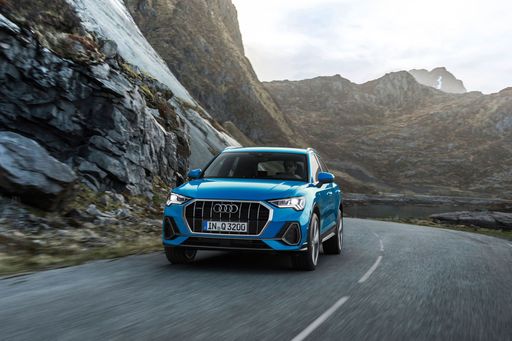 @ Audi AG
@ Audi AG
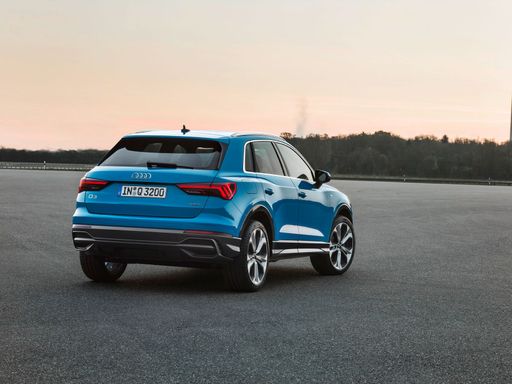 @ Audi AG
@ Audi AG
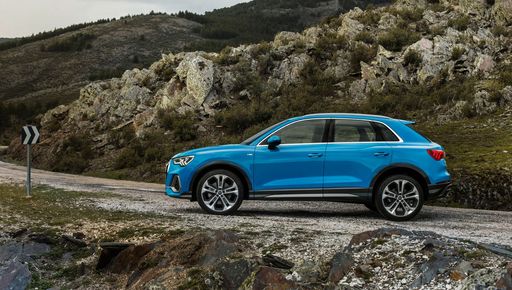 @ Audi AG
@ Audi AG
 @ Audi AG
@ Audi AG
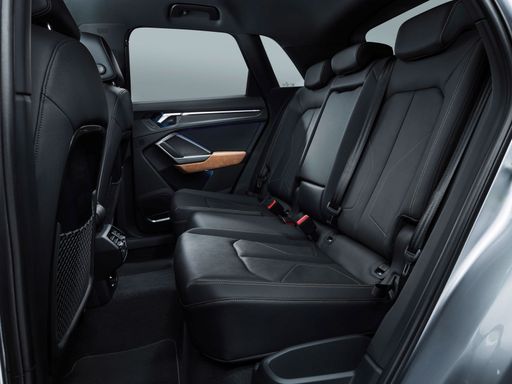 @ Audi AG
@ Audi AG
Hyundai Tucson
Hyundai Tucson marries bold, sculpted looks with a clever, roomy cabin that feels smarter than its price tag suggests. It's composed on the road, easy to live with day-to-day, and a sensible choice for buyers who want SUV style without the showroom theatrics.
details @ Hyundai Motor Company
@ Hyundai Motor Company
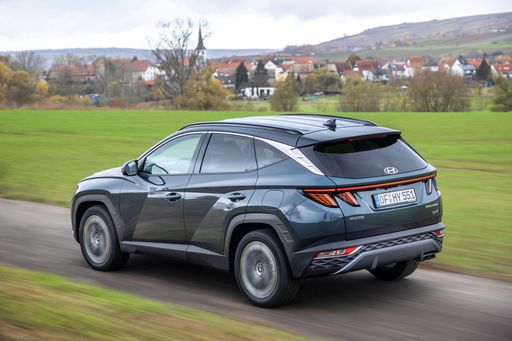 @ Hyundai Motor Company
@ Hyundai Motor Company
 @ Hyundai Motor Company
@ Hyundai Motor Company
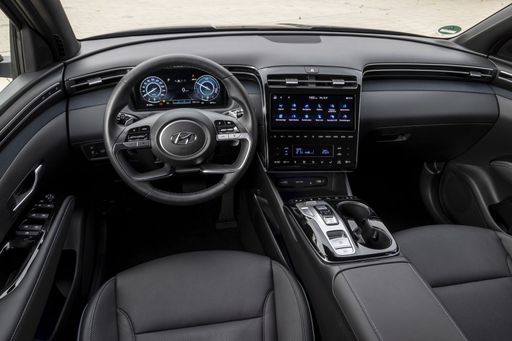 @ Hyundai Motor Company
@ Hyundai Motor Company
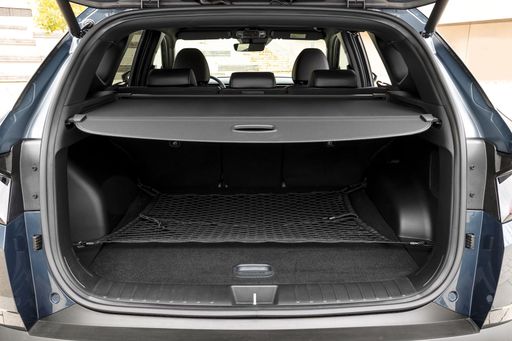 @ Hyundai Motor Company
@ Hyundai Motor Company
 @ Audi AG
@ Audi AG
|
 @ Hyundai Motor Company
@ Hyundai Motor Company
|
|
|
|
Costs and Consumption |
|
|---|---|
|
Price
38200 - 52900 £
|
Price
30600 - 46300 £
|
|
Consumption L/100km
1.7 - 8.6 L
|
Consumption L/100km
1 - 6.9 L
|
|
Consumption kWh/100km
-
|
Consumption kWh/100km
-
|
|
Electric Range
118 - 119 km
|
Electric Range
64 - 70 km
|
|
Battery Capacity
19.70 kWh
|
Battery Capacity
-
|
|
co2
39 - 195 g/km
|
co2
22 - 156 g/km
|
|
Fuel tank capacity
45 - 60 L
|
Fuel tank capacity
42 - 54 L
|
Dimensions and Body |
|
|---|---|
|
Body Type
SUV
|
Body Type
SUV
|
|
Seats
5
|
Seats
5
|
|
Doors
5
|
Doors
5
|
|
Curb weight
1635 - 1900 kg
|
Curb weight
1520 - 1889 kg
|
|
Trunk capacity
375 - 488 L
|
Trunk capacity
546 - 620 L
|
|
Length
4531 mm
|
Length
4510 - 4520 mm
|
|
Width
1859 mm
|
Width
1865 mm
|
|
Height
1559 - 1601 mm
|
Height
1650 mm
|
|
Max trunk capacity
1196 - 1386 L
|
Max trunk capacity
1721 - 1799 L
|
|
Payload
505 - 535 kg
|
Payload
525 - 545 kg
|
Engine and Performance |
|
|---|---|
|
Engine Type
Petrol MHEV, Petrol, Plugin Hybrid, Diesel
|
Engine Type
Diesel MHEV, Petrol MHEV, Petrol, Full Hybrid, Plugin Hybrid
|
|
Transmission
Automatic
|
Transmission
Automatic, Manuel
|
|
Transmission Detail
Dual-Clutch Automatic
|
Transmission Detail
Dual-Clutch Automatic, Manual Gearbox, Automatic Gearbox
|
|
Drive Type
Front-Wheel Drive, All-Wheel Drive
|
Drive Type
Front-Wheel Drive, All-Wheel Drive
|
|
Power HP
150 - 272 HP
|
Power HP
136 - 252 HP
|
|
Acceleration 0-100km/h
5.7 - 9.2 s
|
Acceleration 0-100km/h
7.9 - 11.6 s
|
|
Max Speed
208 - 240 km/h
|
Max Speed
180 - 194 km/h
|
|
Torque
250 - 400 Nm
|
Torque
265 - 367 Nm
|
|
Number of Cylinders
4
|
Number of Cylinders
4
|
|
Power kW
110 - 200 kW
|
Power kW
100 - 185 kW
|
|
Engine capacity
1498 - 1984 cm3
|
Engine capacity
1598 cm3
|
General |
|
|---|---|
|
Model Year
2025
|
Model Year
2024
|
|
CO2 Efficiency Class
E, G, B
|
CO2 Efficiency Class
E, F, D, B
|
|
Brand
Audi
|
Brand
Hyundai
|
Is the Audi Q3 offered with different drivetrains?
The Audi Q3 is available as Front-Wheel Drive or All-Wheel Drive.
The prices and data displayed are estimates based on German list prices and may vary by country. This information is not legally binding.
